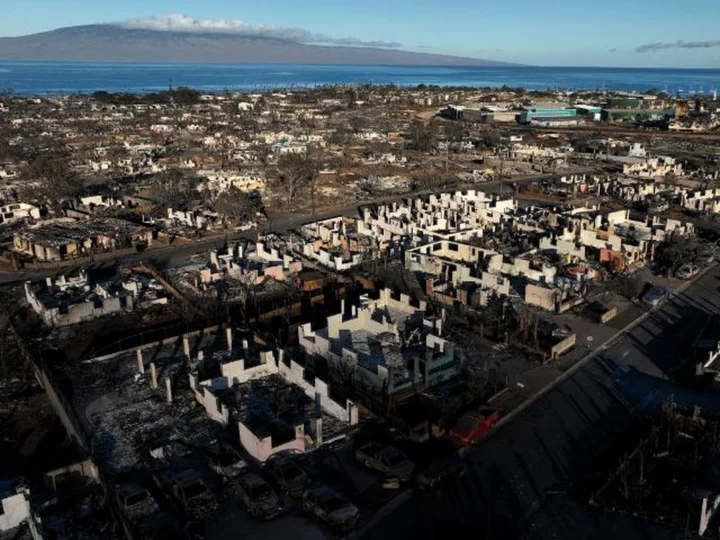The devastating fires in Maui have caused at least 115 deaths, yet only 46 of those have been identified two weeks on from the blaze, police said Thursday. Hundreds of people remain unaccounted for, too.
The grim contrast between those numbers shows the difficulty in locating and identifying victims' remains amid the scorched landscape so soon after the fire. The process is likely to take weeks to months -- lengthy, yes, but one that has been sped up by recent advances in DNA technology honed during the 2018 Camp Fire in northern California.
"DNA has been really extremely helpful for us, with the Rapid DNA," said Alison Galloway, professor emerita of anthropology at the University of California-Santa Cruz, who helped identify remains during the Camp Fire. "If you don't have that ... then it's a lot more difficult."
In general, forensic experts rely on DNA, dental analysis, fingerprints, medical hardware or circumstantial evidence to try to identify remains. But a scorching fire like in Maui makes many of those processes impossible because the remains may not be recognizable or usable for testing.
"We do have extreme concerns that because of the temperature of the fire, the remains of those who have died in some cases may be impossible to recover meaningfully," Hawaii Gov. Josh Green told CBS's Face the Nation Sunday. "So there are going to be people that are lost forever."
Last Monday, Maui Police Chief John Pelletier said of the 99 remains they had found at the time, only three were identifiable by fingerprints.
"We're still diligently working trying to make sure that we can identify (remains), and that's why that DNA is so important, because we got fingerprints from three," he said.
Indeed, DNA has become particularly important thanks to the development of Rapid DNA by the company ANDE Corp., which is currently being used in Maui. Using a small machine out in the field, a process that once could take months now takes a crisp 94 minutes. That speed and reliability has, according to one study, "dramatically accelerate(d) victim identification."
The DNA technology itself is not new, said Stephen Meer, the ANDE chief information officer and managing director of critical operations. "We just made it smaller, more rugged, and faster."
The challenges of identifying remains
One of the closest comparisons to the Maui fire is the Camp Fire in November 2018, in which flames ripped through the community of Paradise, California, turning the town to ashes and leaving more than 1,000 people unaccounted for. Over weeks and months, investigators worked to confirm the whereabouts of those missing, to search for remains and to identify them.
The process was explained in detail in a 2020 study published in the Journal of Forensic Science. The study found conventional methods like fingerprints, dental study and surgical hardware -- such as a knee replacement or pacemaker -- helped identify victims in just 22 of 84 cases.
The problem was most remains were badly burned.
"The condition of most individuals was analogous to remains that are commercially cremated (prior to their pulverization into ash), reflecting the immense heat and long duration of thermal exposure," the study said.
In stepped Rapid DNA from ANDE. First used in the field in 2014, the mobile DNA units have been used by the military and law enforcement agencies to quickly identify the dead where they are rather than send samples off to a distant lab, Meer said.
Those in the field can put up to five samples of unidentified remains into a printer-sized machine, which then uses Short Tandem Repeat (STR) analysis to produce a DNA ID specific to each person. Law enforcement can then compare those IDs to a database of close family members who have given their own DNA samples to find a match.
Meer said ANDE's technology is particularly good at working with old and damaged bones as that found after a catastrophic fire.
Galloway, the forensics professor, said one of the advantages of the Rapid DNA technology is in quickly determining whether a DNA swab is usable.
"The advantage we've found is we can sample (remains) and 90 minutes later you know if you've got a result. If you don't, you can go back and see if there's anything else we can use," she said. "You can quickly see if you're gonna get a viable sample."
In all, 58 victims of the Camp Fire were identified by comparing DNA from remains to DNA from close family members. The Camp Fire was the first mass casualty event to use Rapid DNA Identification technology, and the Journal of Forensic Science study praised the method for its speed and accuracy.
"Unlike previous disasters for which DNA identification may have required months to years, the ability to generate DNA results quickly had a major impact on process flow in the morgue," the study said.
Since the Camp Fire, the ANDE technology has been used in several other mass casualty events, including the Conception boat fire off the California coast in 2019 as well as in the war in Ukraine.
Maui asks for family members to come forward
For Rapid DNA to work, family members of the missing have to willingly submit to DNA swabs. That can be difficult due to some people's privacy concerns.
Indeed, the FBI, Maui Police and Maui Emergency Management Agency have asked family members of those missing to provide DNA swabs and pledged the DNA will not be used for anything else.
"The FBI is collecting the DNA for the sole purpose of helping identify those reported missing and will provide the samples to the laboratory assisting the police department," the bureau said. "No DNA will be retained by the FBI."
Meer said he understood the wariness for people who may be undocumented or wanted for arrest. He said anyone giving a sample will be presented with a waiver explicitly saying the swabs will only be used for this identification process.
"People don't need to be afraid to come forward," he said.
Another challenge in getting people to come forward is that some families may still be holding out hope that their loved ones are still out there. Providing a DNA sample is, in many ways, a recognition that their loved ones may be gone forever, and getting over that mental hurdle can take time, Meer said.
Jonathan Masaki Shiroma, who had four family members die in the blaze, told CNN on August 16 he has one cousin still missing and that he was hoping DNA could play a role in identifying them.
"Another cousin did provide a DNA sample just so that when this sadly, probably, will be the inevitable conclusion of what's going on, to identify this other cousin that ... we still have not heard from," he said.
When technology fails, circumstantial evidence prevails
The Camp Fire ultimately left 85 people dead, and the process of getting to the death toll was long and uncertain.
The number was at one point revised down from 86 because remains, including a bone fragment, thought to be from two different people were later determined from circumstantial evidence to be from Robert Quinn, age 74, authorities said.
The announcement from the Butte County Sheriff illustrates the macabre challenges for those in the field.
"The bone fragment was found among Quinn's remains and at the time of the initial autopsy, anthropologists initially believed it may have been a bone belonging to a separate victim because it did not seem to fit with Quinn's remains due to a size differential," the sheriff's office said.
"Upon further analysis, the anthropologists determined that the difference in bone size is attributed to shrinkage caused by the extreme heat of the fire. The bone fragment in question was too badly burned to obtain a DNA profile, however the circumstantial evidence supports the finding that the bone fragment is part of Robert Quinn's remains."









